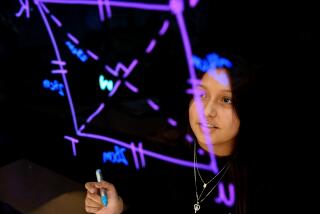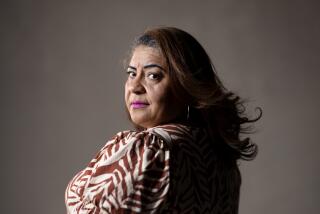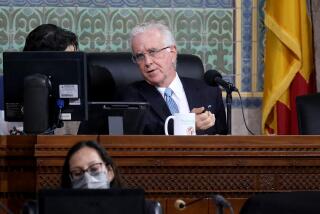Schools Need Wider Base of Support, Panel Says
The future success of San Diego city schools requires far stronger community support, a freer hand for teachers and principals to try new ways of teaching and better use of technology, a group of prominent San Diego educators and business officials said Monday.
The strong recommendations for giving many more San Diegans a stake in the cityâs educational system come from the Schools of the Future Commission, a community group set up last year to see how national and state proposals for education reform can be applied to San Diego by the year 2000. The commissionâs report was released Monday.
The commission, chaired by former school board member Bob Filner, will ask the school board at its meeting today to begin pilot projects to focus on new teaching approaches in several schools during the next two years. In addition, it will ask the five-member board to push ahead on the idea of a community-schools partnership that would expand jobs and scholarships for graduates, provide greater tutoring and parent involvement in the schools, and give students more exposure to local and Mexican culture.
âWeâre trying to be a catalyst,â Filner said at a Monday press briefing, stressing that commission members individually will try to keep the report in the public consciousness. âItâs up to us and the school board to see that this doesnât become a dust-gatherer.â
Filner said 5,000 copies of the report will be distributed citywide, along with a larger number of smaller brochures summarizing the main points.
âThe future of our schools and community hangs in the balance,â the preamble to the 30-page report states in portraying the school system--the nationâs eighth-largest--at a crossroads. âThe choice is ours. We can make our schools serve the needs of the fastest-growing community in one of the most technologically advanced and culturally diverse states in America--or we can abdicate the responsibility to inertia, prejudice, fear and myopia.â
The 17-member commission said that the district, to turn out capable graduates, must recognize several factors: that the areaâs economy is shifting away from industrial to information jobs; that advances in technology will require greater knowledge of computers and the ethical issues of automation; that the school population will be growing, with a far greater number from minority or low-income backgrounds, and that an equally growing number of San Diegans with no school-age children must be persuaded to support better schools.
For schools to respond effectively, the commission listed five major goals:
- Creation of a new schools-community coalition to involve parents, businesses, community colleges, senior citizens, the government and public service organizations. It would be modeled after Massachusettsâ Boston Compact, a joint venture between schools and businesses to provide jobs for graduates meeting minimum skills. The San Diego idea would expand upon Bostonâs program to include the other groups.
The San Diego Private Industry Council received a $10,000 grant from the National Alliance of Business in February to set up an initial coalition later this year.
- A restructuring of schools to give teachers and principals much greater flexibility to carry out general guidelines set by the state and district. Filner said that, while some individual schools have innovative programs today, too many teachers still encounter bureaucratic obstacles that block their efforts to meet needs that vary from school to school.
âLetâs give clear guidelines but let schools then design ways to carry them out,â Filner said. The commission wants the board to establish several pilot schools within the next two years to experiment with teaching approaches.
- A strong infusion of technology, such as computers and telecommunications, into the classroom. In addition, electronic transmission of school information to the home could help parents keep up with student performance and encourage learning beyond the physical classroom. While such technology is being tried at some schools, the commission said there are no plans to use it districtwide.
- Expansion of second language and world studies programs to complement San Diegoâs setting as a border community and gateway to Pacific Rim nations. The commission believes all students should learn a second language, in addition to English, beginning in elementary school.
- Support of a statewide effort for a 1988 ballot measure to set up a permanent and independent source of funds for state public schools. Such a source would eliminate the yearly political battles in Sacramento over education money, the commission said.
Among the commission members: Rear Adm. Bruce R. Boland, commander of the San Diego naval base; Terry Churchill, area vice president, Pacific Bell; Kay Davis, school board president; Irwin Jacobs, chairman and president of Qualcomm Inc. in Sorrento Valley; Paul Saltman, UC San Diego professor; Arthur Ollman, executive director of the Museum of Photographic Arts, and Tuan Quang Pham, equal opportunity employment director at General Dynamics.
More to Read
Sign up for Essential California
The most important California stories and recommendations in your inbox every morning.
You may occasionally receive promotional content from the Los Angeles Times.










